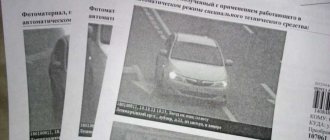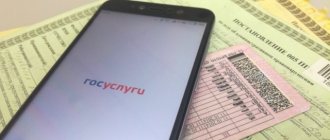What happens if you don’t pay traffic police fines for cameras is a fairly common question among car owners. The answer to it is tritely simple - the appropriate punishment will come. When authorized persons receive facts from registrars about committed offenses, they send the violator a decision to prosecute on legal grounds.
However, drivers are in no hurry to be held accountable for their actions and avoid fulfilling their obligations. Missing the period for reimbursing a fine will result in the individual being subject to a more severe penalty than a fine.
Payment period
According to the provisions of Article 32.2 of the Code of Administrative Offenses of the Russian Federation, the total period for eliminating a certain fine is 60 days. However, it is worth considering that the period begins after 10 days from the moment the person receives the document establishing the type of impact. This time is given to the person to appeal the court decision to a higher authority.
If no complaints have been received from the person for 10 days, then such behavior means the person’s internal consent to a specific type of punishment and determination to bear it.
IMPORTANT !!! Currently, there is a so-called discount system, which provides the violator with the opportunity to pay the amount within 20 days from the date of receipt in 50% of the amount. However, discounts do not apply to serious violations.
Information about non-compliance with the rules is sent to the driver’s address, to which photographs of the vehicle and the amount of the established penalty are attached. The payment period begins to flow from the moment the owner of the car signs the postal notice.
Where are notices of fines sent?
Free legal consultation
In addition to direct notification from the traffic police, you can receive notification of a fine in the following ways:
- Using a newsletter to a personal email address from the public services service. In this case, you will first need to register with subsequent identification on the service;
- By receiving a message to a contact phone number, subject to the use of specialized automatic payment services from banking companies;
- By postal notification directly to the offender’s registered address. This option is not very beneficial for citizens, since mail is often delayed along the route.
Penalties for non-payment of fines
If the culprit fails to fulfill monetary obligations, he may be subject to liability measures set out in Art. 20.25 of the Administrative Code, namely:
- a fine not paid on time is subject to a new taxation of double the amount. This means that the violator will have to pay the initial amount, and subsequently double it. That is, triple punishment occurs;
- imprisonment for no more than 15 days. Almost never used;
- assignment of any public works. In case of malicious evasion of payments, this is the measure most often chosen to suppress illegal behavior.
The last two sanctions mentioned can be applied to a person solely based on the existence of a judicial conclusion. However, if it comes to increasing the amount due to non-payment of the initial fine, then a court order will be required here too.
How long will it take for fines to appear on the public services website?
As a rule, it takes about three days to process information about violations assigned by video recording. This is an average indicator, after which you can view data about the offense on the government services website. In this case, the specified period can range from 1 to 15 days, which is due to untimely processing of information, malfunction of equipment, and so on. In any case, using the public services service you can obtain information in the shortest possible time, compared to other methods.
Collection procedure
The lack of information in the database about the payment of assigned funds to the state becomes a reason to contact the FSSP employees.
Officials of an authorized organization, using methods of influence, can force a person to pay the resulting debt.
To achieve the goal, they can use the following methods:
- Send to the banking organization in which the personal accounts of the car owner are opened, an executive document to freeze deposits and deduct the required amount from them.
- If the debt is more than 10 thousand rubles, impose a ban on traveling abroad of the Russian Federation. This means a lack of proper rest during vacation.
- Prohibit or limit the prerogative to dispose of property during the period of non-payment of debt.
- Confiscate the owned car, as well as other property to cover the debt.
ATTENTION !!! Inspectorate employees have the right to detain the debtor and bring him to the magistrate or the police, and in the meantime the car will be in the parking lot for a fine. Joint actions of traffic police and bailiffs are also being carried out. If non-payments are detected from a person, the latter is initially asked to voluntarily pay the amount immediately or the car is seized until the debt obligations are fulfilled.
Options for checking fines from cameras
Waiting for a “chain letter” to arrive via Russian post is a risky undertaking, as it often happens when it is accidentally put into the wrong mailbox or is completely lost. You can also miss the period to pay off the fine and then you will have to pay significantly more.
Today, motorists have several options for checking fines using special cameras. To do this, prepare the number of the vehicle registration certificate or driver's license and information about the state number:
- Internet portal of the traffic police service - gibdd.ru. Here, in addition to information from cameras recording violations, you can also find out a list of other unpaid fines.
- Third-party resource of the traffic police service - shtrafy-gibdd.ru. Here information is provided not only on road transport, but also on motorists. In addition, you can use the SMS messaging service. To do this, you need to send an SMS to the toll-free number 9112 with the text: Traffic police_vehicle number_driver's license number.
- Government services – gosuslugi.ru. Here, you first need confirmation of identity and authorization, and then from the menu you need to go to the item “Ministry of Internal Affairs of the Russian Federation” - “Providing data” and indicate the required data in the empty fields. As a result, the service will display all outstanding fines of the traffic police service and you can immediately pay them.
- Autocode – https://avtocod.ru. This service is designed exclusively for Muscovites. You can find information about unpaid parking spaces there.
How not to miss the opportunity to pay a fine with a fifty percent discount if notification of it from the camera arrives later than 20 days?
Russians can pay most fines from the traffic police service with a 50% discount if they manage to deposit the funds within the first 20 days from the date the resolution is issued. And in the previous paragraphs we have already indicated that a “letter of happiness” can take three weeks or even a month to reach the addressee.
So it turns out that if the violator receives a fine for only 21 days, then he will no longer be able to take advantage of the discount when paying. Therefore, in order to pay half the fine, it is recommended not to wait for a letter, but sometimes to look for the availability of fines on official services, portals, etc. For example, on the official website of the traffic police service, you can find out if there is a fine even without going through the registration process in just a couple of clicks. On State Services, you can sign up to receive information about fines via SMS notifications or email (in both cases, messages arrive quickly). In addition, there are special applications for smartphones that notify you of new fines.
This way you can always know up-to-date information about current fines and learn in time about the appearance of new ones in the traffic police database. And this will happen much earlier than you receive the “letter of happiness.” Having learned about the assignment of the next penalty in a couple of days, you will still have a lot of time to repay it with a fifty percent discount.
Possible restrictions
In 2021, the operating norms of federal legislation establish the possibility of restricting the management of any vehicle if the total debt is more than 10 thousand rubles. The impact is allowed to be applied five days after the start of enforcement proceedings and only if the debtor was notified of the possibility of deprivation of his driver’s license, but ignored the warning.
IMPORTANT !!! Property that is at that time in the vehicle and represents a certain value can be sold. It can be sold to pay the due amount.
Initially, the employee undertakes to offer the debtor to liquidate the resulting amount on a voluntary basis. In case of non-compliance or evasion, a temporary restriction is applied.
If, while the restriction is in effect, the driver begins to drive a car and the fact is established, the license has the right to be confiscated for a period of up to 1 year or subject to mandatory community service. If the vehicle is a source of income for an individual, then it has no right to be confiscated.
How long does it take for fines to be received from stationary cameras?
If a traffic violation on the road is captured by a stationary camera, then the fine will take a little longer. All this is due to complex software and a large number of transition points before creating a letter. First, the device records the offense, then sends the information to the operator, after which the signal goes through a few more steps and only after that is delivered to the auto-recording center, where all letters to motorists are generated.
The fastest way to send fines is from the Avtodoriya camera. They look like black boxes and are always installed on poles. Their main purpose is to record the average speed (they measure the time interval through which the vehicle will travel a pre-known distance between one and the second such video recording device).
So, you can receive a “letter of happiness” when recording an offense with a stationary camera “Avtodoriya” and many others:
- If you are a resident of a large metropolis – from 4 to 7 days.
- If you live in a small town or suburb - from 6 to 10 days.
- If you live in the Russian outback - from 7 to 25 days.
Attention! This is not official information. The figures are based on the experience of motorists and statistics for the current year (2021).
How to avoid paying fines
Internet users can recommend many options on how to avoid liability for a traffic fine. However, almost all will be considered illegal and may result in more serious penalties later. The most legal way of non-payment is the expiration of the statute of limitations for the execution of a court decision.
So, according to Art. 31.9 of the Code of Administrative Offenses of the Russian Federation, the payment period is no more than 2 years from the date of the judge’s conclusion. If at this time compensation has not been paid, then the punishment ceases to apply.
But this does not always happen, since the situation itself involves many nuances, namely:
- According to the current norms of Russian administrative legislation, the period may be extended for various circumstances. A striking example is evidence of avoidance of FSSP employees by the debtor. Or, with the passage of time, it becomes clear that the defaulter has previously unknown sources of profit or his place of residence becomes known;
- if the owner manages to appeal the court decision, then the duration of compensation will begin to flow from the time the new decision enters into legal force;
- when sending a document establishing this type of liability by mail. In this case, the collection time begins to count from the moment the debtor signs the notice of delivery of the letter.
ATTENTION !!! There is always the possibility of a situation arising when a conclusion cannot be made for the following objective reasons.
These factors include:
- The meeting did not take place within 3 months from the time the offense was committed. It is no longer possible to collect the fine.
- The fact of the act was recorded by a surveillance camera, but a decision on the case was not made within 2 months. A fine cannot be applied.
Operating principle of cameras
Photo and video recording systems are capable of recording both speeding and identifying eight other types of offenses - driving through a red traffic light, entering an intersection behind which there is a traffic jam, hitting a solid line, etc. The cameras are constantly “trained” in new functions, and their number remains unchanged growing. This makes it possible to punish drivers for violating legal norms and at the same time replenish the state budget.
There are several types of cameras you can find on the roads:
- Radar - they record the license plate number of a car by sending electromagnetic waves to it. They cope with their functions only if the license plate has a backlight. The error of these devices is quite high. A flickering signal allows you to determine that the camera is working.
- Laser - capable of detecting violations from a great distance, but in the presence of precipitation they lose their effectiveness.
A speed camera usually has two mechanisms: the first is aimed at recording the time and license plate number of the car in the area in front of the camera, and the second is in the area behind the camera. Next, calculations take place inside, the speed of the machine on the site is determined, and then it is compared with the permissible speed. If an excess has been registered, the driver will soon receive a letter of fine. But even earlier it will appear on the traffic police website. Read more about what violations can be recorded by traffic police cameras in the material at the link.
What to do if you don’t agree with the punishment
Many problems are caused by real video camera errors, which subsequently lead to fines being imposed on innocent persons. Each individual who receives a letter of violation has the prerogative to appeal the decision within 10 days. The message contains direct photographs confirming the fact that the act was committed.
When considering the case materials, you should pay attention to:
- compliance with road markings;
- designation of car numbers (not the fact that it is the owner’s car that is recorded);
- specified speed.
It is possible to prove innocence only in a situation of obvious error (for example, a car owner in the capital was charged with a fine for driving into the oncoming lane. He managed to present evidence that only the shadow of the car was caught).
IMPORTANT !!! If the decision made is illegal, then you should contact the traffic police, already preparing to defend the violated interests in court. It is only possible for those who did not commit the act to hope for the resolution to be repealed. If the violation nevertheless occurred through your fault, then it is better to quickly pay the fine while the 50% discount is valid for 20 days.
How long does it take to receive fines from portable cameras?
Portable cameras mean devices on tripods near roads, in traffic police cars and in other places. Most often they are installed in the morning and removed in the evening.
Motorists usually receive fines issued according to data from traffic cameras more quickly. But this applies exclusively to the formation of letters to TsAFAP of a specific locality, and in some cities even the deadlines may vary slightly. Depending on the work schedule of the delivery service (Russian Post), the fine can last from 2 - 3 days to 14 - 21 days.
As of 2021, the following general data can be highlighted:
- If you are a resident of MSK, St. Petersburg, Ufa, Yekaterinburg, Kazan and other cities with a population of over a million, then you will receive a fine in your hands 3 to 5 days after it is issued.
- If you live in the suburbs of a large populated area, then you will have to wait 3–10 days for a letter.
- If you live in the Russian outback, then a letter with information about a fine from a camera will take a long time to reach you - up to a month.
Is it possible not to pay a fine if you do not sign the mail notification?
Many motorists mistakenly believe that if they received a fine letter in their name, for which they did not sign and receive it, or even pretended that they knew nothing, then the collection period will expire and they will not have to pay anything. However, in reality everything is far from the case.
IMPORTANT !!! If the letter does not find a recipient, then after 30 days the postal workers send it to the sender. From the period of such return, the period without an authorized payment period of 70 days begins to expire. That is, non-receipt actually somewhat delays the moment of payment, but does not free you from it.
Cases of loss of a notice or letter cannot be excluded. But even under such circumstances, no one is exempt from responsibility. Since now it is possible to find out about the state’s claims against each person on the Internet, namely in the personal account of the state website. services or on the official traffic police domain. In the latter case, you will have to enter the car’s license plate number and registration certificate in the indicated fields.
However, each driver independently decides whether to pay fines or not to do so. However, such behavior can lead to more serious types of punishment and interest from other institutions. The use of more stringent penalties and incentives to pay is unlikely to avoid a response.
Why does the fine not disappear from the traffic police database after combustion?
Information about existing debts for traffic violations is stored in the State Traffic Inspectorate database. When checking it, fines with an expired statute of limitations will be indicated as unpaid. This happens because administrative punishment acquires the status of “burnt” only conditionally.
In fact, there is no obligation to pay it, but the traffic police database will contain information about the fine, which is listed as unpaid. Information about it will always remain relevant when receiving information about administrative penalties at any time.
What violations will result in a fine from photographic recording?
Within a few days, traffic safety inspectors send a resolution on an administrative offense by letter with a photograph obtained from the cameras. During this time, they are required to send confirmation of violation of traffic rules and a decision to collect a fine. It is sent not by regular letter, but by registered letter with notification - traffic police officers will know when the car owner receives the letter in their hands.
Video recording
Traffic police fines are received from cameras only for certain offenses:
- Violations of the established maximum speed on a section of road.
- Crossing the stop line.
- The driver or passenger's seat belt is not fastened.
- Crossing a solid or double solid line.
- Driving in a lane intended for public transport or crossing it in the wrong place.
- Driving or driving in the opposite direction.
- Incorrect parking or parking without taking into account the rules.
- The registration plate of the vehicle is completely or partially unreadable.
View from cameras










